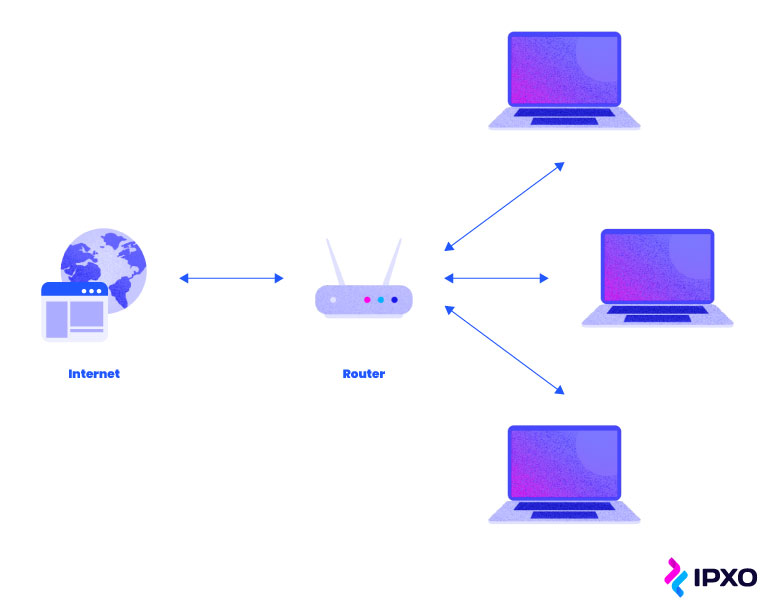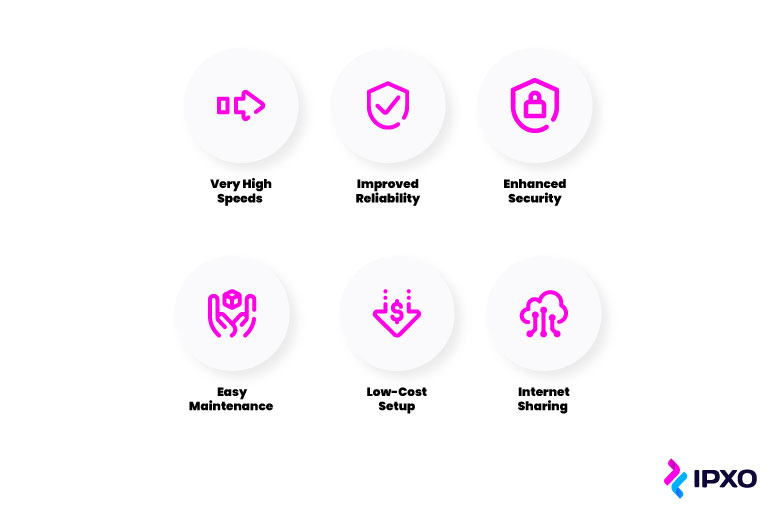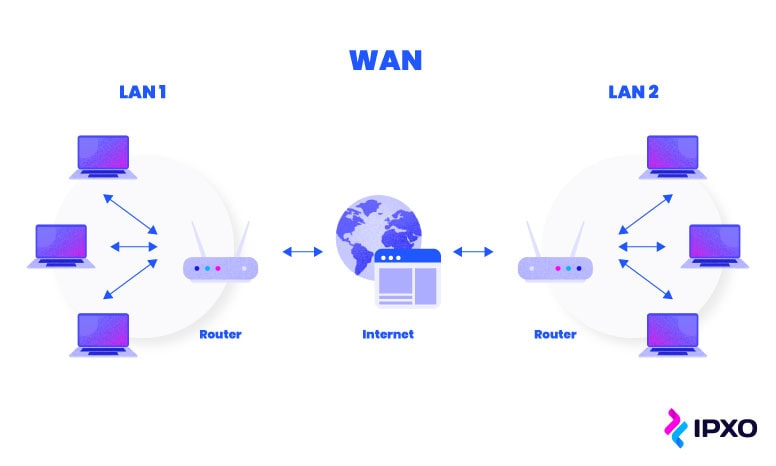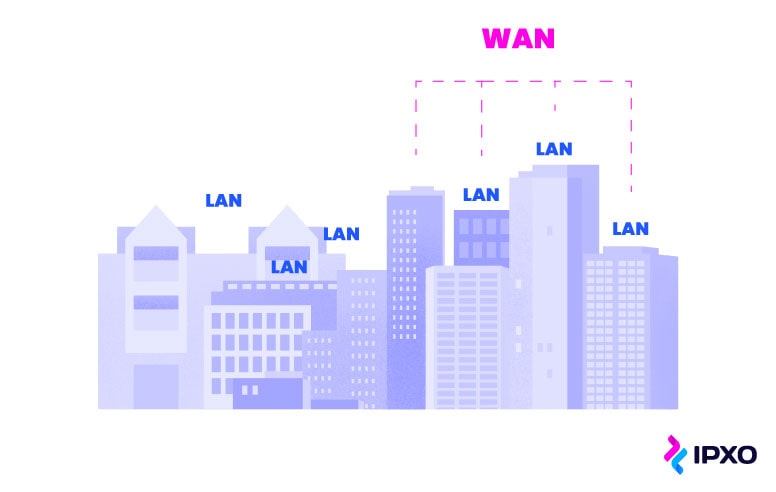WAN vs. LAN: Comparing Wide Area Network to Local Area Network
What is a local area network? What is a wide area network? How do they differ and how are they similar? You can find answers to these questions in this post.
When you connect to the internet with a router, your device becomes part of LAN (local area network) or WAN (wide area network). Before we compare WAN vs. LAN, let’s see how they work.
A computer network is a collection of devices that can communicate. While LAN is a network of devices connecting to the same router, WAN envelops the entire public internet outside LANs.
To fully understand the two, you need to understand how LAN and WAN work and what they offer. This article defines LAN and WAN and explains what sets the two network types apart.
Mục Lục
What is LAN?
A local area network is a local computer network or collection of local devices (e.g., video game systems or smart devices) connected in one physical place. For instance, this can be a home or business network or even an entire office building or corporate office park that provides one single internet connection for all LAN users.
A single LAN might have only a few connected devices or as many as a few thousand, like in the case of massive corporations and other organizations. However, one thing is always the same – all LAN users are connected and confined to the same physical space, like the same building. A LAN extends as far as ethernet cables reach, or a Wi-Fi signal travels.
This yields various benefits, including better resource and file sharing, easier communication and even enhanced security. We must note that you can enhance WAN security too by implementing appropriate security features.
 What is LAN
What is LAN
There are two main types of LANs: Peer-to-Peer LAN and Client-Server LAN. The latter consists of devices (clients) connected to a single central server. The former doesn’t have to connect to such a server and is smaller.
LANs can also be entirely virtual, allowing networks to be bigger and for administrators to group and separate devices and nodes without changing the existing infrastructure. These are virtual LANs, or VLANs.
LAN advantages
A typical local area network has the following traits:
- Very high speeds
- Improved reliability (due to being Ethernet cable-connected)
- Enhanced security (it’s easier to manage data in one place)
- Easy maintenance
- Low-cost setup (due to sharing the same software and hardware)
- Internet sharing
 LAN advantages
LAN advantages
But how exactly does a local area network work? Let’s take a look at its infrastructure.
LAN’s infrastructure
Installing local area networks is a complicated process because a typical LAN infrastructure includes many different elements:
- Computers with network interface cards (NICs)
Today, most computers have two NICs – one for Ethernet and one for Wi-Fi. These cards connect computers to networks. If there is no NIC for Wi-Fi access, the computer needs to have physical ports (typically labeled LAN) that allow it to connect to the internet via ethernet cables.
- Routers
Network routers assign IP addresses to devices and allow them to connect to other LANs. Wireless routers allow computers to establish wireless connections between each other and wireless communication with the internet.
- Modem
A modem is a device that’s necessary to connect LANs to other LANs and, consequently, establish WANs.
- Cables
Many types of cables connect computers, including UTP cables and fiber optic cables. The first is the standard cable, while the latter is more expensive but offers vastly higher speeds. Both enable computers to establish wired connections to the internet.
- Hubs and switches
Cables go through boxes that contain switches and hubs. A hub separates and shares data packet transmission with the computers in the network. Switches transmit data to a specific computer.
- Software
You need both network software and security software. While the former typically comes with a computer’s operating system, you usually have to download the latter.
- DHCP server
A single computer with plenty of hard drive space and RAM must operate as the Dynamic Host Configuration Protocol (DHCP) server computer. The protocol automatically provides the IP host. Without it, you’d need to manually configure IP addresses for new computers.
What is WAN?
A wide area network, for lack of a better world, is a network of local area networks. Think of a WAN as a collection of LANs. In essence, WANs are networks of networks, and the world’s biggest WAN is the internet or a worldwide public WAN.
 What is WAN
What is WAN
Unlike local area networks, wide area networks exist in much larger spaces. Generally, a large geographical area, such as a state, country or the entire world, like the internet.
In most cases, organizations and enterprises use WANs. Also, they are typically created using premium telecommunication circuits.
Large corporations use WANs to communicate with regional offices and share and check personal data files. Besides corporations, other organizations that use WANs include militaries, airlines, railways, universities, data centers, telcos and internet service providers.
WAN advantages
A typical wide area network has the following traits that benefit its network users:
- Wide area coverage
- Data centralization
- Easy file sharing
- Stable uptime
- High bandwidth
 WAN advantages
WAN advantages
WAN’s infrastructure
A WAN allows individual internet users to access the internet. It also enables large corporations that cannot be limited to a local network to share computer resources. In essence, a WAN is vital for both.
A WAN can be massive, covering an area as large as 100,000 km. This means it can cover the entire planet, as the circumference of the Earth is just slightly above 40,000 km. It’s the reason why internet access is available throughout the globe.
Every wide area network in use is established when an internet service provider leases its WAN to an organization. For example, a business or a school. As long as the devices connect to the WAN, they can share information, regardless of their location in the world.
Computers that connect to a WAN stay connected as long as they have access to the WAN that’s given through different links, including:
- Lines (typically, a cable line)
- Wireless networks
- Cellular networks
- Internet connection
- VPNs
It’s also important to mention that routers have different ports for WANs. In essence, WAN ports have different colors and are separate from regular LAN ports. Usually, a router has several LAN ports but only one WAN port. A WAN port is also sometimes labeled as an internet port. A WAN port usually connects to a cable modem or a DSL to connect to the internet.
WAN vs. LAN: key differences
You’ve already learned that LAN and WAN networks are different, but what are the key differences? Let’s take a look at the most important LAN vs. WAN differences.
Area coverage size
LANs are certainly more secure, less costly and easier to maintain, but only a WAN traverses multiple geographical areas. LANs can still cover larger areas than a single building, but never as large as WANs.
Consider this: A LAN network is typically limited to 10 km. A WAN network, on the other hand, can cover an area that ranges up to 100,000 km. That said, the size can also hinder the network’s reliability, most notably when data transmission errors occur.
Due to its size, a WAN network usually has more data transmission errors compared to a typical LAN that experiences fewer data transmission errors for the simple reason that it has a smaller number of connected systems.
Data transfer rates and speed
When it comes to data transfer rates, LAN is the clear winner. Undoubtedly, sharing files and data with a computer connected to the same LAN is easier. Moreover, the LAN bandwidth is much higher too. Essentially, LANs are much faster, while WANs typically come with a lower data transfer rate.
Purpose of use
The purpose of use for the two networks is quite different. A LAN is typically used within a home or an office. In most cases, it enables sharing files within a single facility. A WAN is broader, and it is more commonly used by big corporations, universities and similar organizations.
 LAN vs. WAN
LAN vs. WAN
Propagation
Domain Name System (DNS) propagation is the time it takes for DNS record updates to come into effect throughout the entire internet. This doesn’t affect the speed of a domain; however, if the propagation time is too long, the visitor may see a cached version of a site. DNS propagation in a LAN is much shorter than it is in a WAN.
Similarities
Despite the many differences between LAN and WAN, there are still some similarities. The most crucial parallels involve:
- Consumers and enterprises can use either
- Both rely on the Transmission Control Protocol/Internet Protocol (TCP/IP) suite
- Both can be either wired or wireless
- Cloud-based mechanisms work with both
- Both have two or more connected nodes
Conclusion
A LAN is a collection of network devices connected together. A WAN is a large network that can connect multiple LANs. Both LAN and WAN networks have their purposes, advantages and disadvantages.
A LAN is primarily used in homes, offices, buildings and generally smaller areas. In contrast, a WAN is used by massive organizations and corporations that may even need to stay connected across vast geographical regions.
When it comes to choosing LAN or WAN, if you have a small business located within a single office, it makes sense to be a LAN user. On the other hand, if your company spreads across different regions in a country or the entire world, WAN is the answer.















![Toni Kroos là ai? [ sự thật về tiểu sử đầy đủ Toni Kroos ]](https://evbn.org/wp-content/uploads/New-Project-6635-1671934592.jpg)


